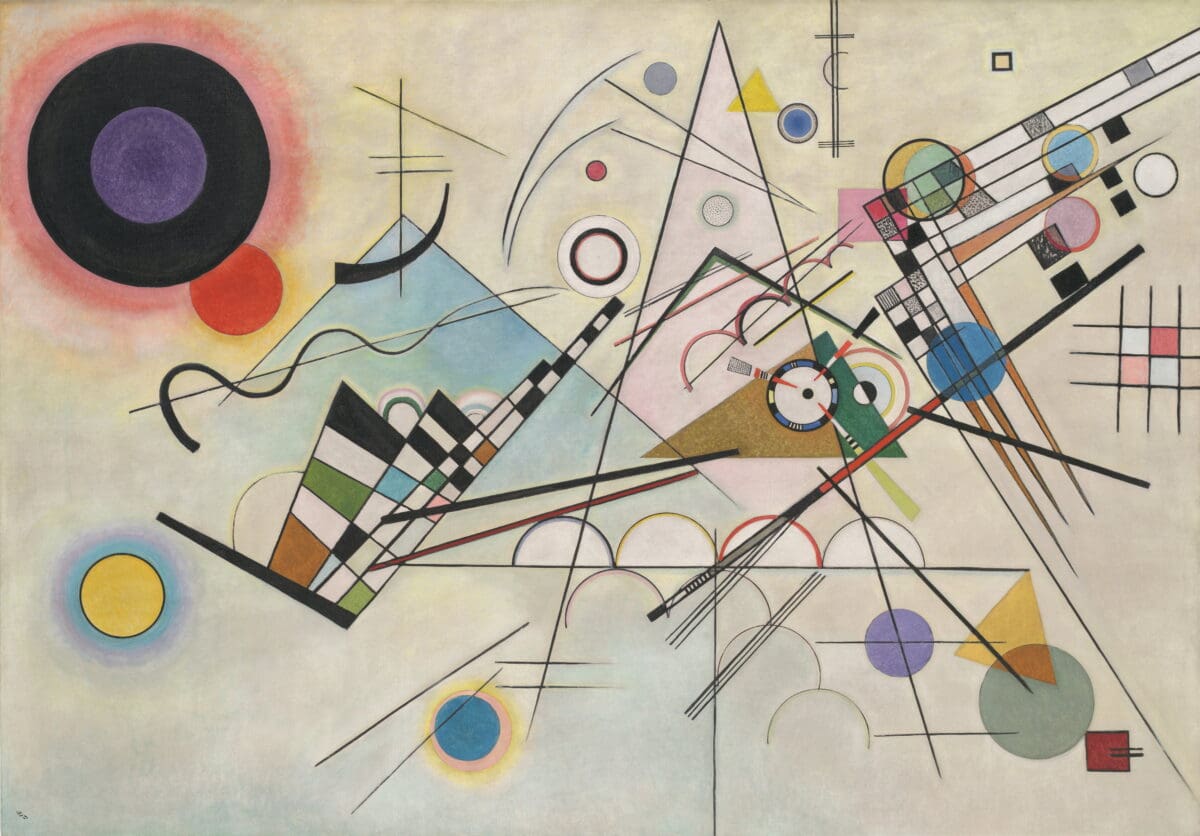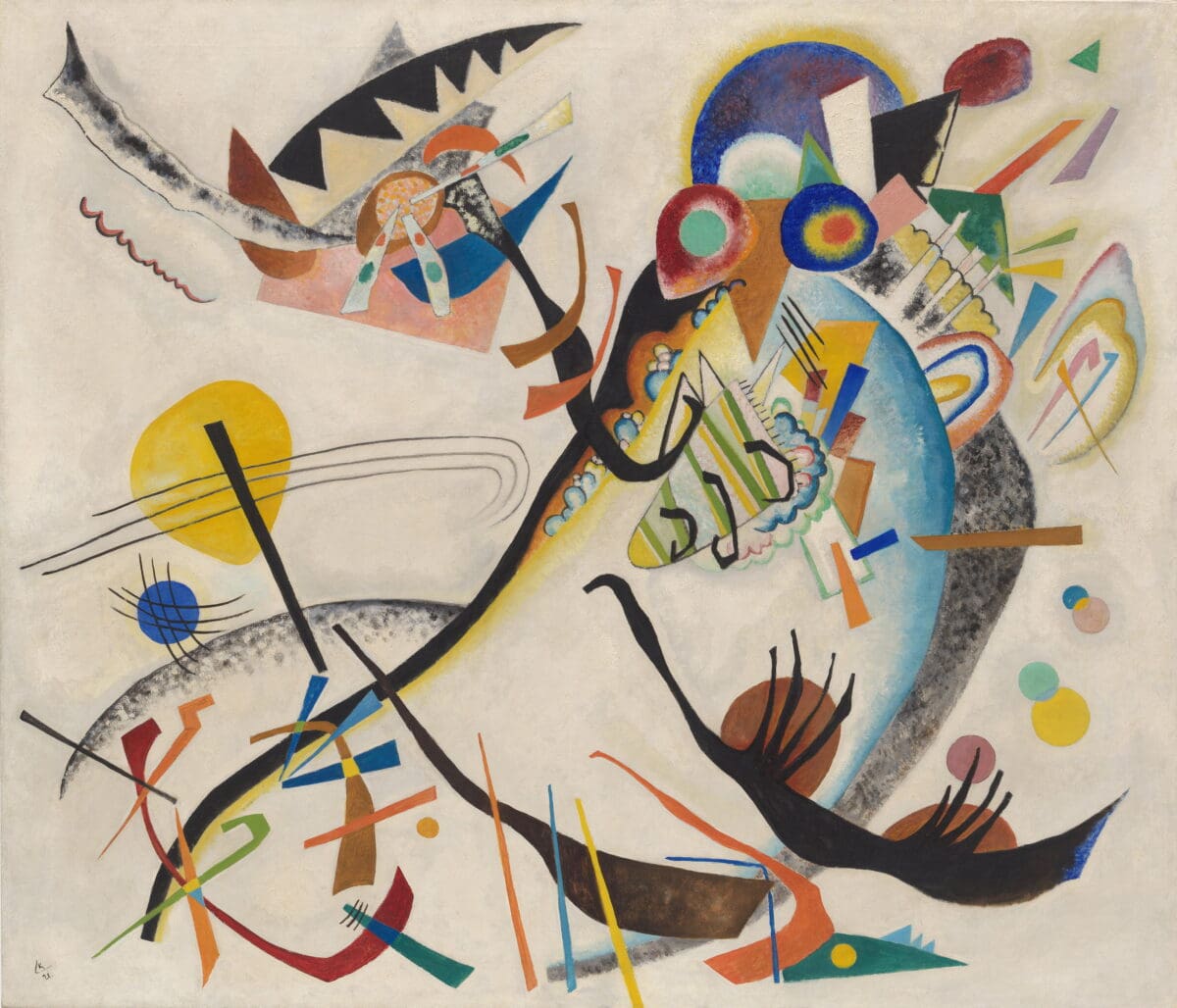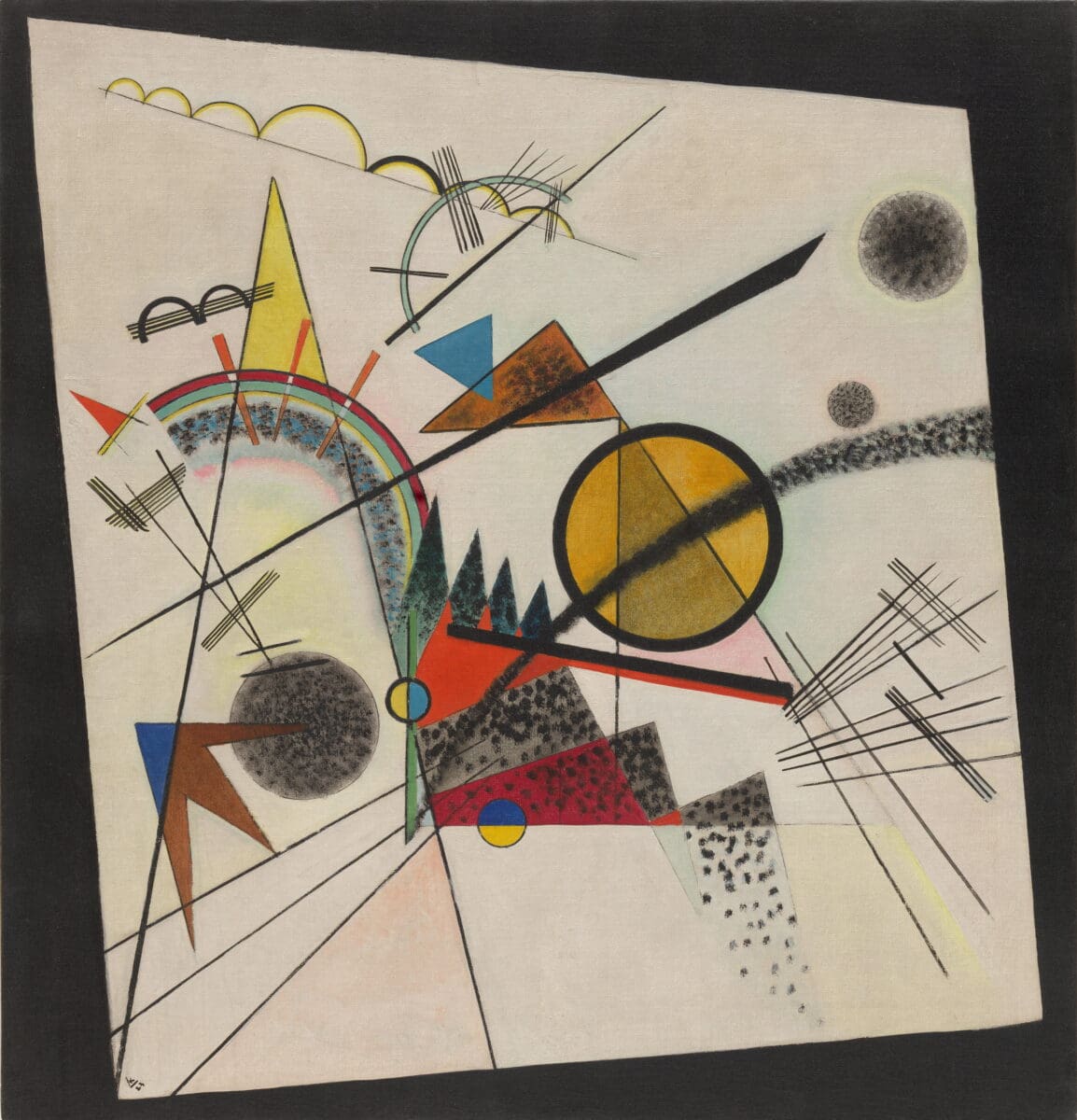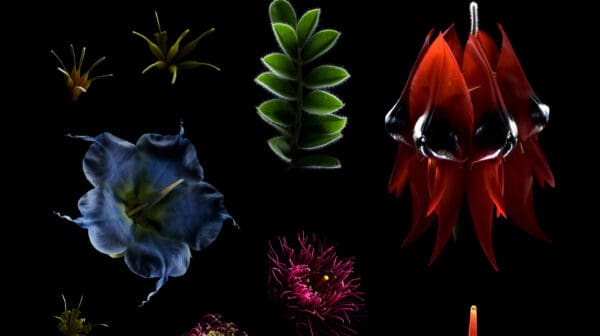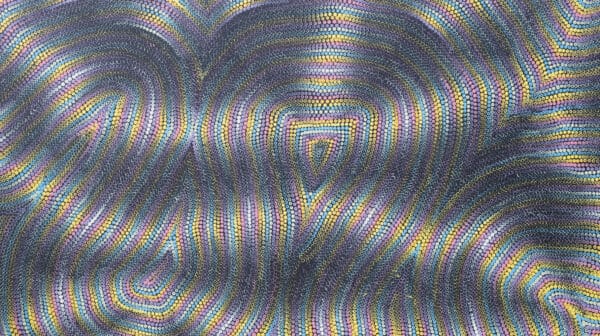After years of collecting the standard art fare of early twentieth century upper-class New Yorkers, Solomon R. Guggenheim was in his 60s when he began acquiring the work of Russian born modern artist, Vasily Kandinksy (1866-1944). Initially encouraged by German abstract painter, Hilla Rebay, to look further into non-objective art (a type of abstract art focused on line, colour and geometrics), in 1930 Guggenheim travelled to Europe in search of the new.
It was at the Bauhaus, a school of art and design in Germany where Kandinsky taught mural painting and analytical drawing, that Guggenheim first met the artist. Their meeting was the beginning of a fruitful association that served as an impetus for the eponymous museum Guggenheim would later build in New York. With more than 150 works by Kandinsky currently in their collection, non-objective art remains the cornerstone of the Guggenheim Museum.
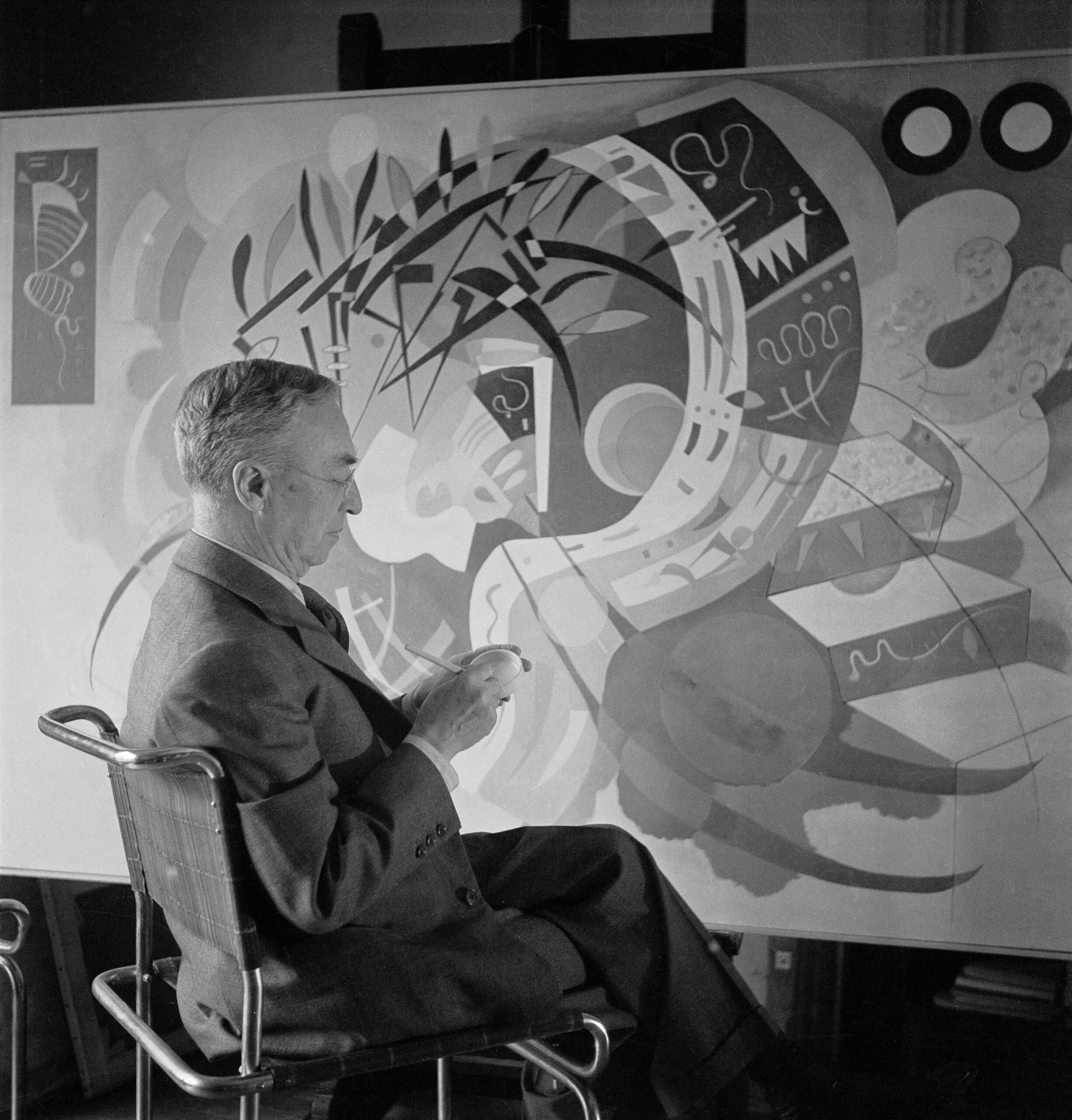
For the Art Gallery of New South Wales’s (AGNSW) major exhibition, Kandinsky, over 50 works from the Guggenheim collection have been brought together by curators Megan Fontanella and Jackie Dunn to reflect key moments in Kandinsky’s life.
One of the first works Guggenheim bought from Kandinsky was Painting with white border, 1913. A homage to Moscow, the painting recalls a trip Kandinsky took to his Russian homeland in the autumn of 1912. With faint outlines of triangular rooftops and the suggestion of a horse-drawn carriage, Painting with white border is filled with the textural undulations of colour and sharp linework Kandinsky would become known for.
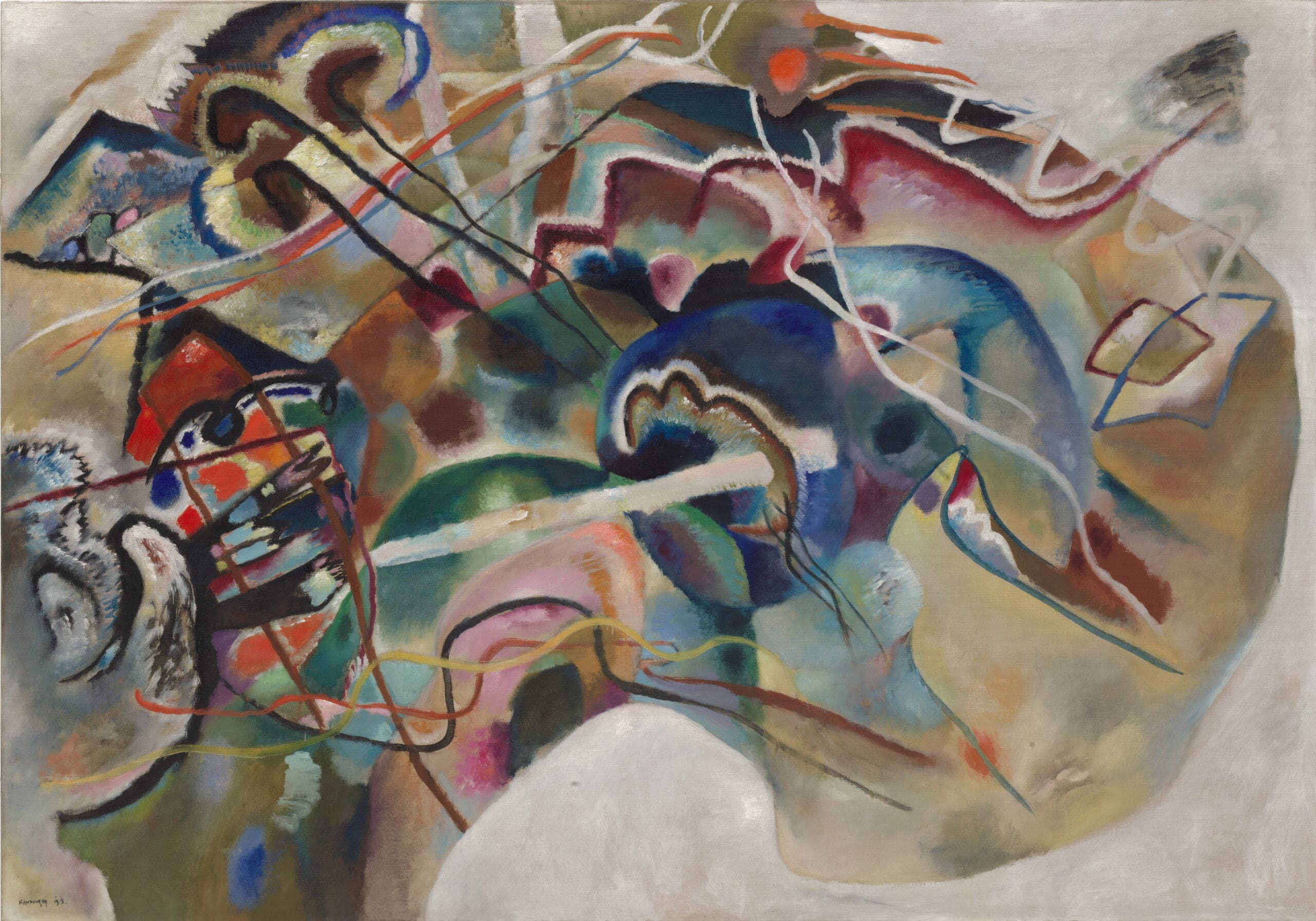
“1913 was a breakthrough moment where his references to the visible world seem to be removed from the work, and yet there’s this symbolic personal language he maintains,” says Dunn. “It’s an extraordinary work built up over 16 preparatory studies, one of which we actually have in the AGNSW collection.”
Dunn also points to Blue Mountain, 1908-1909 as a pivotal point in Kandinsky’s stylistic development. “At this time, Kandinsky’s really gone through a transition after four years of traveling in Europe with his partner Gabriele Munter. He has gained a new understanding of colour through looking at Fauvism, and upon his return to Munich he paints Blue Mountain – this revelatory work of expressive colour that includes the motif of the horse and rider, which became significant in his work over many years.”
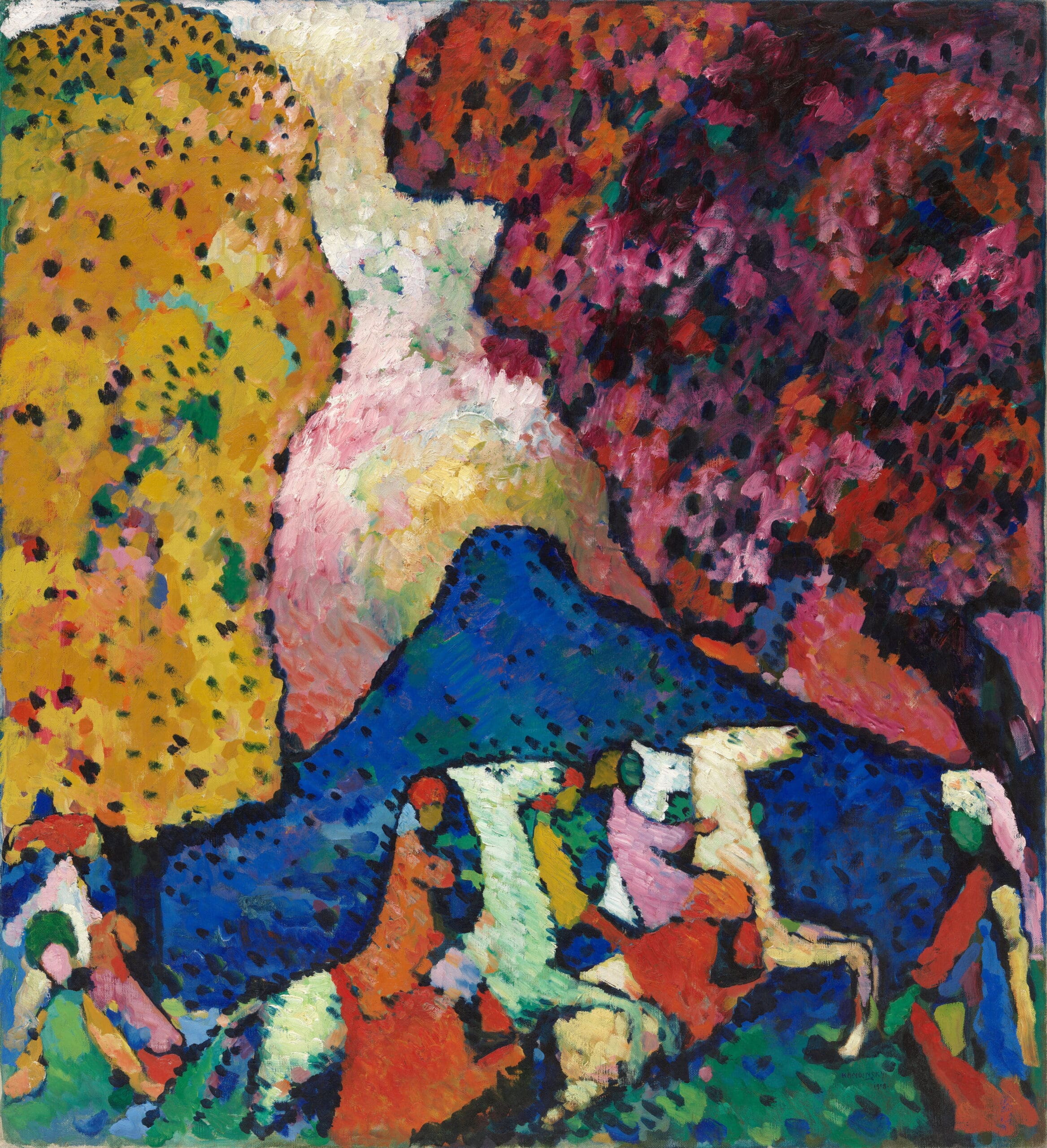
Together with German artist Franz Marc, Kandinsky was a driving force behind the Munich-based art group, Der Blaue Reiter (The Blue Rider). United by their affinity for abstract forms and vibrant colours, The Blue Rider group viewed the horse and rider as symbols of spirituality and rebirth, and blue as a colour connected to heaven and inner worlds.
Kandinsky’s later work speaks to his love for music, particularly the compositions of Richard Wagner, and many of his paintings translate the experience of sound into a visual language filled with grids, triangles and radiant colour. “We know he must have experienced some kind of synesthesia response with this conflation of music and colour in his mind, but something else is also going on,” explains Dunn. “In the years before World War I, Kandinsky is also starting a series of works based on the apocalypse or a kind of apocalyptic vision. He’s been experiencing all the turmoil and fascination associated with the social and scientific developments occurring around him. He talks about the impact of finding out about the atom being split, his soul is in turmoil and the crumbling of the world seems to appear in his paintings. We have that sense of abstraction and music, but also this idea of a tumultuous world.”
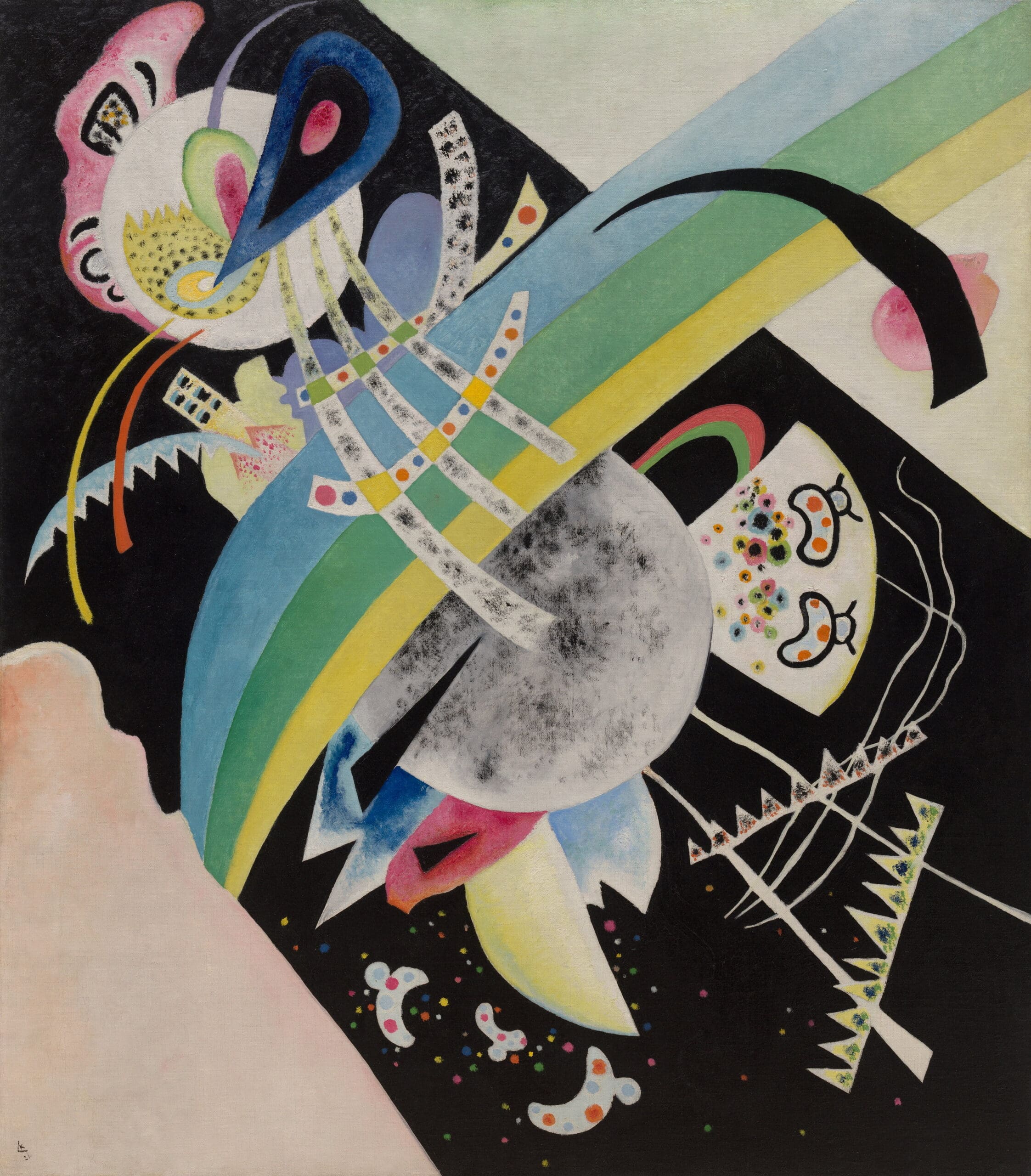
Pushed out of Germany by the Nazi regime in the early 1930s, Kandinsky lived out his final years in Paris, still painting despite a lack of materials (when regular paper was scarce, he painted on scraps of photographic paper). A sensitive and perceptive artist who spent his career looking for ways to express the inner world of feeling and emotion, there remains a timeless quality to Kandinsky’s work, as Dunn explains. “He’s really trying to convey something deeply spiritual, and give people access to this through a formal abstract language relating to both the artist’s expression and the viewer’s expression. Kandinsky genuinely felt abstraction was a way for people to have an emotional, psychological response to art.”
Kandinsky
Art Gallery of New South Wales
4 November—10 March 2024




